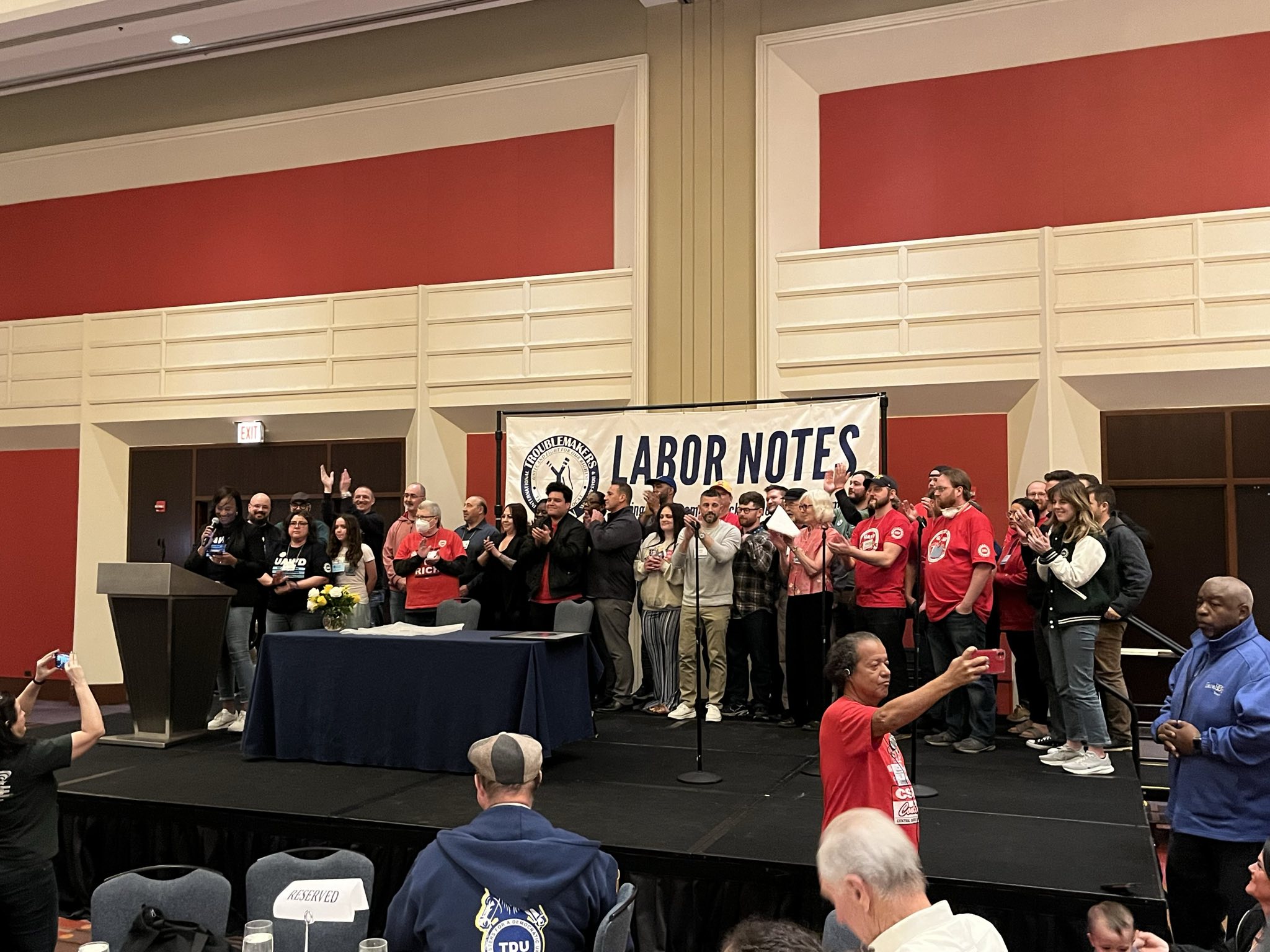In September 2021, organizers marked the 10-year anniversary of Occupy Wall Street. For some, Occupy represents an important milestone that warrants celebration, for others, this anniversary elicited a sigh and an eyeroll, with Occupy serving as a reminder of a period they are glad to have moved beyond. Some people think Occupy’s impact has been given too much credit. While this may be true, it is undoubtable that Left politics in the United States has grown more identifiable over the past 10 years. This would not have happened without Occupy.
The mixed feelings about Occupy serves as an entry point to understanding the state of the American Left. The American Left is far from a monolith. While shared values provide the connective tissue, Leftists in America must hold together the disparate issues, campaigns, and demands they want to advance. This challenge appears in multiple ways, from questions of strategy, to messaging discipline, or even tactics.
The Left, in America and beyond, aims to address the root causes of our societal woes. This makes this political project such a massive undertaking. The ideological foundations and aspirational world view on which Left ideas stand are incredibly powerful – from the ideological underpinnings (e.g., the belief in people over profit, public over private ownership, anti-imperialism, abolition, indigenous liberation) to concrete political demands (e.g., Medicare for All, taxing the rich, a Green New Deal). This aim for transformative change makes the struggle worthwhile.
The past decade offers many promising signs for the Left in the United States. Today, there is a more robust ecosystem of media as well as more varied organizing spaces and resources. These channels provide opportunities to get familiar with Leftist theory, learn about Left ideas and policies in practice, and encourages the development of a social and political vision that matches the current moment. They also foster connection and community. Within these spaces, you find a chorus of distinctive voices and figures, common sayings and phrases, and symbols. There are many markers of a growing coalition and greater cohesion among American Leftists that has developed in Occupy’s wake.
The reality is that the Left in the United States holds some, but far too little power. As a result, many of the same fights of 2011 are still being fought. The societal ills that made Occupy Wall Street so relevant still plague us. The parallels are striking – from an economic and housing crisis, escalating income inequality to a Democratic President that campaigned on progress who has yet to meaningfully deliver and a Far Right coalition that continues to gain strength. Yet in these intervening years, the stakes have grown decidedly higher.
While it can take decades to understand the impact of a mass movement, this Occupy milestone provided an apt opportunity to take stock. This summer, I partnered with the Rosa Luxemburg team in New York City to develop a retrospective podcast series that did just that. Together with the individuals behind Belabored, Economic Update, The Dig, The Nation, and Upstream, we unpacked the lessons we can learn from Occupy so far and explored how those insights might be applied over the next decade.
Following this project, I was eager to see how other American Leftists would mark this anniversary. I felt analyzing how this anniversary was covered and understanding the stories told among the American Left would lead to strategic insights about what will be required in the next decade. I identified about 20 media articles and segments from American Left/Left leaning outlets that spoke to the legacy of Occupy. After reviewing each, I conducted a quantitative analysis of the major themes and insights. I offer here a snapshot of my findings.

Before we dive in, it feels important to disclose my own relationship to Occupy: I did not actively participate. This outside perspective allowed me to be less swayed by my personal biases and nostalgia. One of the main themes that came through in these media pieces is the role that Occupy played in orienting people to the Left. Ironically, working on this project served as a critical element of my own political orientation. Studying Occupy and immersing myself in Left analysis enabled me to understand the theory and history of the American Left, and in turn, helped me further refine my own political views. Like many Leftists in America, Occupy was part of my on-ramp to the Left, only for me it happened 10 years later. Now, onto what I found:
What does the American Left point to as to the positive impacts of Occupy?
- An unlocking of new political contexts & opportunities: Occupy was credited with providing space for new relationships to develop, cultivating a strong network of new organizers who went on to use their learnings from Occupy to build other movements. In their article for The Nation, Ruth Milkman, Stephanie Luce, and Penny Lewis characterized Occupy as “the midwife for a new generation of progressive political activists.” Many Occupy alumni point to the seeds they planted during Occupy as having continued to sprout over time through other movements. One author credited Occupy with creating “a cascade of social movements [that have] altered the national conversation, including Black Lives Matter, #MeToo, the Women’s March.” There were a wide range of proof points offered like this one, including Senator Bernie Sanders’ influence in shaping the Build Back Better agenda (although it failed), to paving the way for the mainstreaming of policies, like taxing the rich, student debt cancelation or a $15 minimum wage.
- A resonant & mobilizing message: Occupy’s messaging, especially the 1% vs 99% framing, was attributed with imbuing a new class-based lens in which Americans could understand their economic woes, i.e. the commonness of indebtedness or the shared struggle to provide basic needs. Occupy was widely credited with offering a message that could help challenge deeply entrenched American ideals about personal responsibility and individual accountability (rather than systemic challenges). Authors and interviewees also drew a strong connection between Occupy’s messaging and its ability to encourage people who have never protested or participated in collective action, providing a vehicle to feel part of a collective and find hope. In Jacobin, Ross Barkan put it this way: “Many thousands of people … were energized by Occupy; it gave them hope that someone, someday, would be willing to confront the outrages of capitalism head-on.”
- A clear-eyed class analysis: Implicit in the 1% vs 99% framing was a class analysis. Occupy sought to highlight that capitalism, unhinged corporate control, and corrupted elected representatives were structural challenges that must be dealt with to get at the root cause of income inequality. Occupy centered the role of class solidarity as the key mechanism to dismantle these structures. Centering class solidarity provided a powerful organizing principle that helped remove some of the blockages that focusing on “identity” can bring about. However, many felt that it went too far in centralizing class above all, Occupy overlooked other power dynamics at play in society, especially along the basis of race, gender, and sex.
- A format with impact: Many, but not all, credited Occupy’s enduring influence to its openness, accessibility, and distinctive format. Commentators, especially those who had been involved in Occupy, alluded to the empowerment they felt because of the prefigurative nature of Occupy and its commitment to direct democracy. On Democracy Now, Nelini Stamp of the Working Families Party stated: “It was … the decision-making, the teams, the working groups. Immediately when they said, ‘Here are different working groups, and you should create more,’ I felt like I could take ownership of it.”
How does the American Left articulate Occupy’s shortcomings?
- The other prevailing message? “Occupy failed”: Nearly every article or segment referenced to how the legacy of Occupy has been accused of failure. In Salon, Amanda Marcotte suggested that Occupy Wall Street has “long been understood as a historical novelty, a movement that swiftly rose to national prominence and almost as swiftly sunk below the waves.” For some, they questioned whether Occupy was truly a movement, versus just a “moment” – suggesting Occupy had its fifteen minutes of fame or was just a minor blip on the media radar. Others pointed to the movements lack of clear demands as part of its failings. While many argued that the lack of demands was an important narrative and symbolic choice, others suggested that the movement could be better served by a “non-reformist reform” agenda that could be used to paint a more actionable picture of how to move forward.
- The continued struggle for intersectionality: Many suggested that the movement’s hyperfocus on class dynamics did not account for historic inequities and came at the expense of a more nuanced intersectional analysis. In an op-ed for Truth Out, Dany Sigwalt of the Power Shift Network wrote: “The Occupy movement elevated critical narratives about corporate capture post-Citizens United, wealth inequality and student debt cancellation — but what was obscured in our national conversation a decade ago were many Black and Indigenous organizers’ experiences and analysis about the impacts of white supremacy and colonialism. This is the root cause of the abuse of the planet and people… This limited analysis leads to Band-Aid approaches to systemic harms that fundamentally leave marginalized people behind. Movements [must] forefront analysis about white supremacy and colonialism.”
- The limitations of leaderlessness: For The New Republic, Micah L. Sifry noted that “Occupy’s general assemblies were so time-consuming and so easily hijacked, much of the real work and decision-making went elsewhere, into underground centers of informal power.” Sifry mentions how Alicia Garza, who co-founded the Black Lives Matter network, challenged this idea. Unlike Occupy, BLM was never meant to be leaderless and instead, leaderful. She offered this critique: “Occupy’s commitment to being leaderless didn’t mean there weren’t any. Leadership was largely male, heterosexual, white, and educated at elite universities. If we perpetuate the same dynamics that we aim to disrupt in our movements for change, we are not interrupting power creating change—we are merely rebranding the same set of practices and the same dysfunctions.”
Lessons for the next decade
With the many accolades and challenges of Occupy in the rearview, the urgent need for movements to mobilize everyday citizens to seek to bring about social and political change has never been more dire. With this analysis in mind, here are some of the lessons that I can offer:
- In the last decade, many Left spaces have been newly developed, including several of the media outlets referenced for this project, or revitalized, such as the Democratic Socialists of America. These spaces, which give Left ideas a forum to further percolate and thrive, provide critical venues for more people to get a similar orientation to what Occupy offered. These spaces must prioritize being welcoming for the Left to be effective at retaining new members. Because Occupy did not require a radical litmus test or perfect politics, it was an extremely effective “orientation” for many. Sustaining the relationships and networks that have been developed over time, while also working to expand and grow, must be a key priority among the American Left.
- Commentators drew a strong connection between Occupy’s ability to construct a new narrative as an essential part of its ability to mobilize participants. But for the Left to succeed, this analysis must be administered with a critical eye and greater care. Occupiers concentrated on capitalism, corporate control, and corrupt politics as a central problem and ultimately chose to center class solidarity as the solution. But by ignoring other structural inequities caused by colonialism, racism, patriarchy or ableism, many Occupiers felt unseen or unheard. While class analysis offers a powerful connecting force, it cannot be devoid of consideration for structural inequities. Since Occupy, some commentators have noted that they feel movement spaces have become more effective at centering the voices and experiences of those most marginalized, but this must continue to be a priority.
- Our society misconstrues who is to blame for hardship and atomizes our social relationships, making cultivating collective identities extremely difficult. Occupy provided a much-needed antidote, drawing attention to our current system, enabling participants to feel less alone in their struggle, and begin to see that another world is possible. Participants could see themselves as part of the solution, instead of outsourcing decisions to elected officials. However, short-term forms of collective action should not come at the expense of a long-term organizing strategy. Despite Occupy’s focus on sustaining itself in the short-term, important relationships and networks emerged that have translated to that much-needed long-term development and institution building.
- In the last 10 years, many Occupy participants have evolved from their aversion to the pursuit of building power, specifically within the electoral realm. With this shift has come a dedicated focus on expanding the number of champions the Left has roaming the halls of power. Many commentators indicate that this shift has been a worthwhile and welcomed change, alluding to how Occupy chose not to issue demands and thus missed an opportunity to put forth a clear prognosis and plan of action. Progressives in office not only serve as critical champions to create and champion policy solutions, but also the election cycles themselves also provide consistent opportunities to advocate for Left ideas and reshape narratives. Electoral politics, however, cannot be the sole priority and should not come at the expense of mobilizing Americans outside of election cycles. The Left must continue to motivate and mobilize participants through collective action, through which they can not only experience democratic processes, but also expand their political imaginations.
- With the neoliberal forces that Occupy targeted continuing to loom large, any movement that can bring together a collective of people to fight for social and political change deserves positive recognition and reinforcement. To cast any movement effort as an outright failure is a slippery slope. As Occupy aimed to articulate, the powerful ruling forces are deeply wedded to maintaining the status quo. Writing off social movement as a failure plays into the hands of the powerful. Unfortunately, the idea of Occupy as a failure is something that the American Left still gives too much airtime. Suggesting that social movements “fail” to bring about change also obscures the reality of who holds power currently. The failure coming out of Occupy had nothing to do with the participants, and everything to do with the ruling class. While we must hold movements to high standards, their ultimate task is to create the conditions for change, not bring about a transformation of society overnight.
- The influence of the mainstream media’s interpretation of movements is a powerful force that can counteract and diminish the work of movements. American Left media has a unique opportunity and responsibility to push against these narratives. Moreso, in the wake of Occupy, the Right has demonstrated how effectively they can co-opt populist frustrations and leverage these appeals to call upon American’s worst instincts. The American Right is extremely effective at developing strong, singular, motivating narratives. Unlike the Right, the Left’s task of developing a nuanced message that is both resounding and welcoming is much more challenging. The American Left needs to urgently rise to meet this challenge with a compelling take of what a different world order can offer. Harkening to the simplicity and efficacy of Occupy’s message may potentially provide a useful source of inspiration and direction.
In the next decade, the American Left must focus on building power. This task has to occur in parallel with fighting off the well-funded and powerful forces that seek to oppress it. While the Left in America might not yet hold a significant degree of power, the vibrancy and passion among this community seem primed for ascendancy. As increasing income inequality continues to spiral and the climate crisis becomes more acutely felt, categorizing Left ideas as “radical” or “unattainable” will grow even more preposterous. It will require a unified and disciplined coalition to ward off attacks, but it is completely possible to see a path where the vision Leftists offer will ultimately become the only one that enables us to maintain some semblance of life as we know it.



